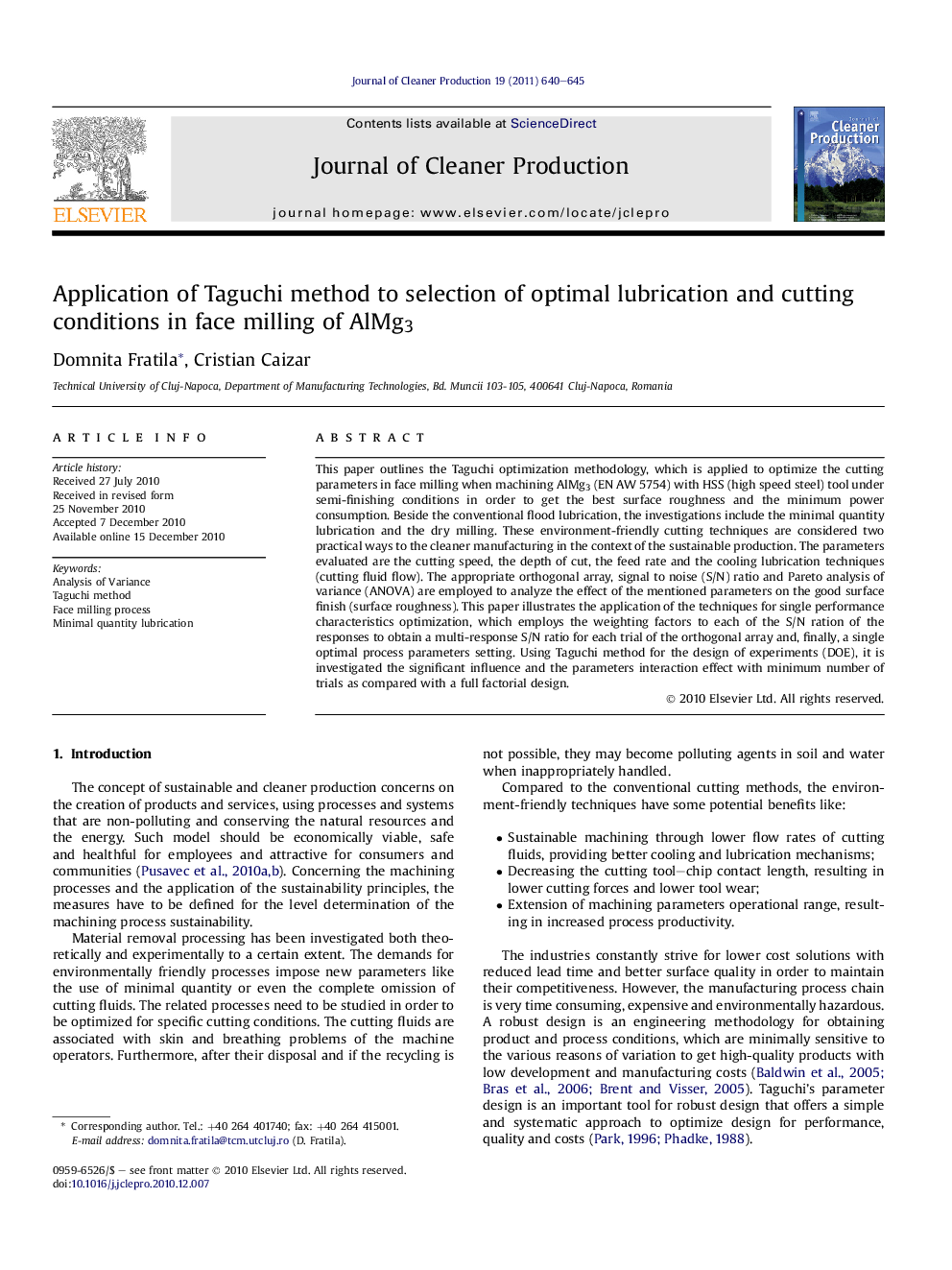| Article ID | Journal | Published Year | Pages | File Type |
|---|---|---|---|---|
| 1745973 | Journal of Cleaner Production | 2011 | 6 Pages |
This paper outlines the Taguchi optimization methodology, which is applied to optimize the cutting parameters in face milling when machining AlMg3 (EN AW 5754) with HSS (high speed steel) tool under semi-finishing conditions in order to get the best surface roughness and the minimum power consumption. Beside the conventional flood lubrication, the investigations include the minimal quantity lubrication and the dry milling. These environment-friendly cutting techniques are considered two practical ways to the cleaner manufacturing in the context of the sustainable production. The parameters evaluated are the cutting speed, the depth of cut, the feed rate and the cooling lubrication techniques (cutting fluid flow). The appropriate orthogonal array, signal to noise (S/N) ratio and Pareto analysis of variance (ANOVA) are employed to analyze the effect of the mentioned parameters on the good surface finish (surface roughness). This paper illustrates the application of the techniques for single performance characteristics optimization, which employs the weighting factors to each of the S/N ration of the responses to obtain a multi-response S/N ratio for each trial of the orthogonal array and, finally, a single optimal process parameters setting. Using Taguchi method for the design of experiments (DOE), it is investigated the significant influence and the parameters interaction effect with minimum number of trials as compared with a full factorial design.
